

|
|---|
Modifications, Fixes, & Patches
|
|---|
AM Filter for the Icom 756 (non-Pro model) I've been looking for an AM filter for my IC-756 for many
years, and just stumbled across a filter from W2ENY. I think he used to offer these, and went out of production for some
number of years. He has brought a limited number of these back for sale. I emailed him, he replied almost immediately that
he still had some, and I ordered one. I'm happy to have finally found one of these babies. I work AM from time to time on
160 thru 10, and usually operate one of my boatanchors due to the w-i-d-e passband on AM. His page is: |
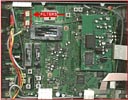
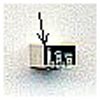
|
|---|
ICOM 756 ALC Mod for AM This is a simple circuit that is used to trick the 756's ALC circuit into allowing the transmitter to operate with upward modulation when operating AM. I ran several tests and always got best transmitted signal quality reports when operating with it in place. There is a simple schematic and description on this site, and can see it by clicking HERE. |
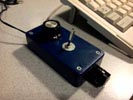
|
|---|
Buxcomm Rascal Interface Mod for CW I've made a mod to the Rascal for keyed CW, so I wouldn't have to change cables when I operated in CW (not MCW) mode. I've posted info and a drawing about this on the site, and you can see it by clicking HERE. |
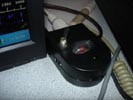
|
|---|
SSB Squelch Mod for my Icom IC-211 I've got an old Icom IC-211 for 2m ssb. It's one of the
early units from the late 70's where the squelch isn't designed for SSB use, and only functions in FM mode. I looked into
the circuit, and it didn't seem practical to mod it for use on SSB. I've toyed around with the idea of adding a squelch
circuit to the rig using an old squelch board from a Motorola Micor, as I have lots of them in junk and I was able to
crowbar it into service on the workbench, but it was designed to work with discriminator audio and was kinda quirky.
I decided to borrow an old idea from a Heathkit mod for the old 2'er Lunchbox from back in the 60's... This is a simple
bridge circuit using 2 incandescent lamps and two resistors. It works great... Check out the two pics and the video. Gonna mount it inside the speaker with a switch to bypass it.
|
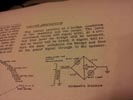
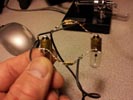
|
|---|
AM mod for the Heathkit SB-401 Transmitter The mods are fairly simple, and I'm working on marking
up my schematic for scan and upload here. I made these mods back around '96 or so. Here's what I did:
|
|---|
Motorola Micor Mods for a 70cm Amateur Repeater We had so many of these Motorola Micors, we decided to build another repeater from them as well. We could have easily stacked two of the rigs for rx & tx, but we wanted to try and make one radio operate full duplex. It will do it, and we still have one of them running on 442.400- and it has been on the air continuously since 1993! Click the pic to the right to get the repeat mods in microsoft word format. You can also see our Micor 440 repeater in operation at the following links: LINK 1 and LINK 2. |
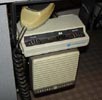 |
|---|